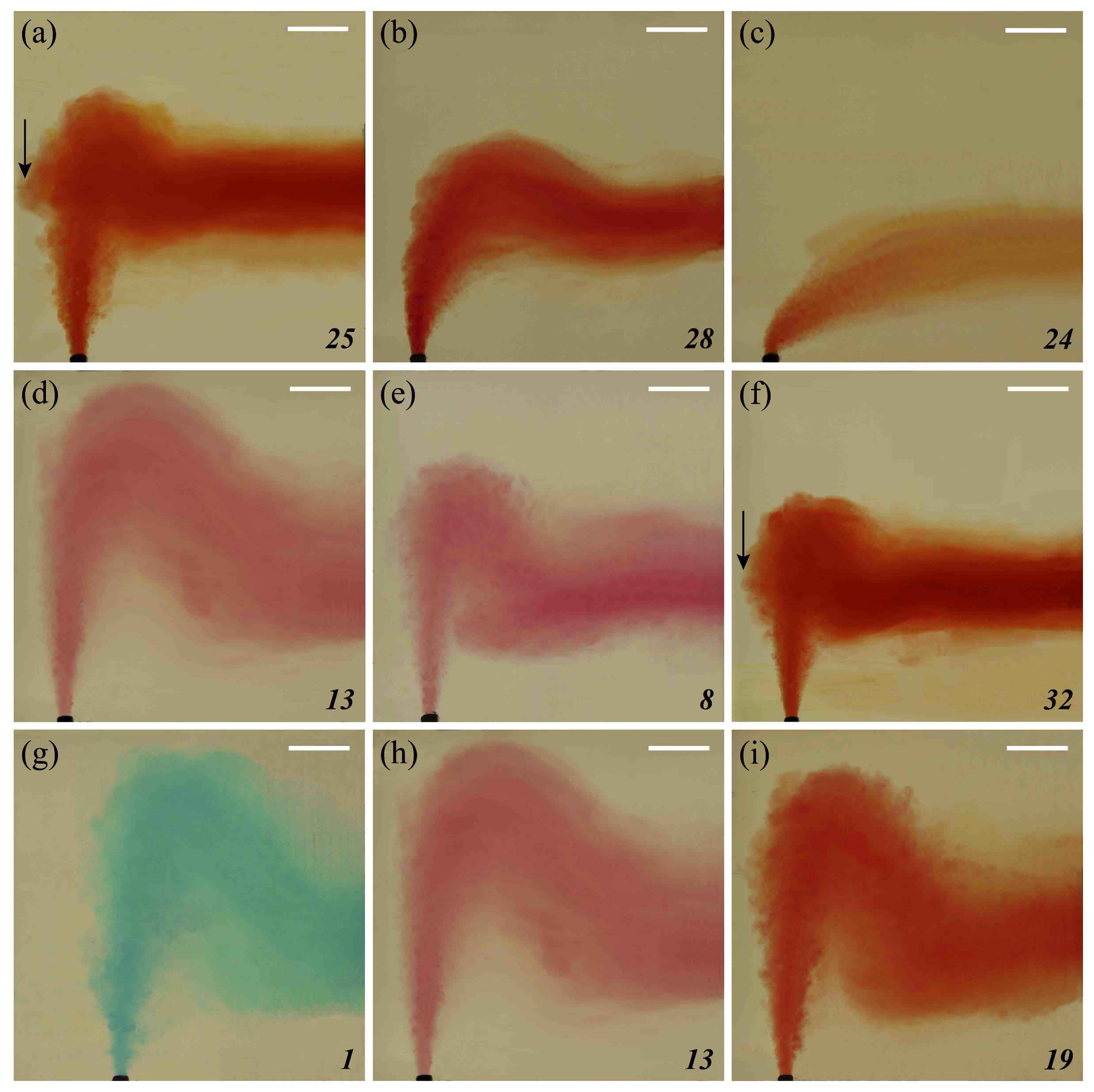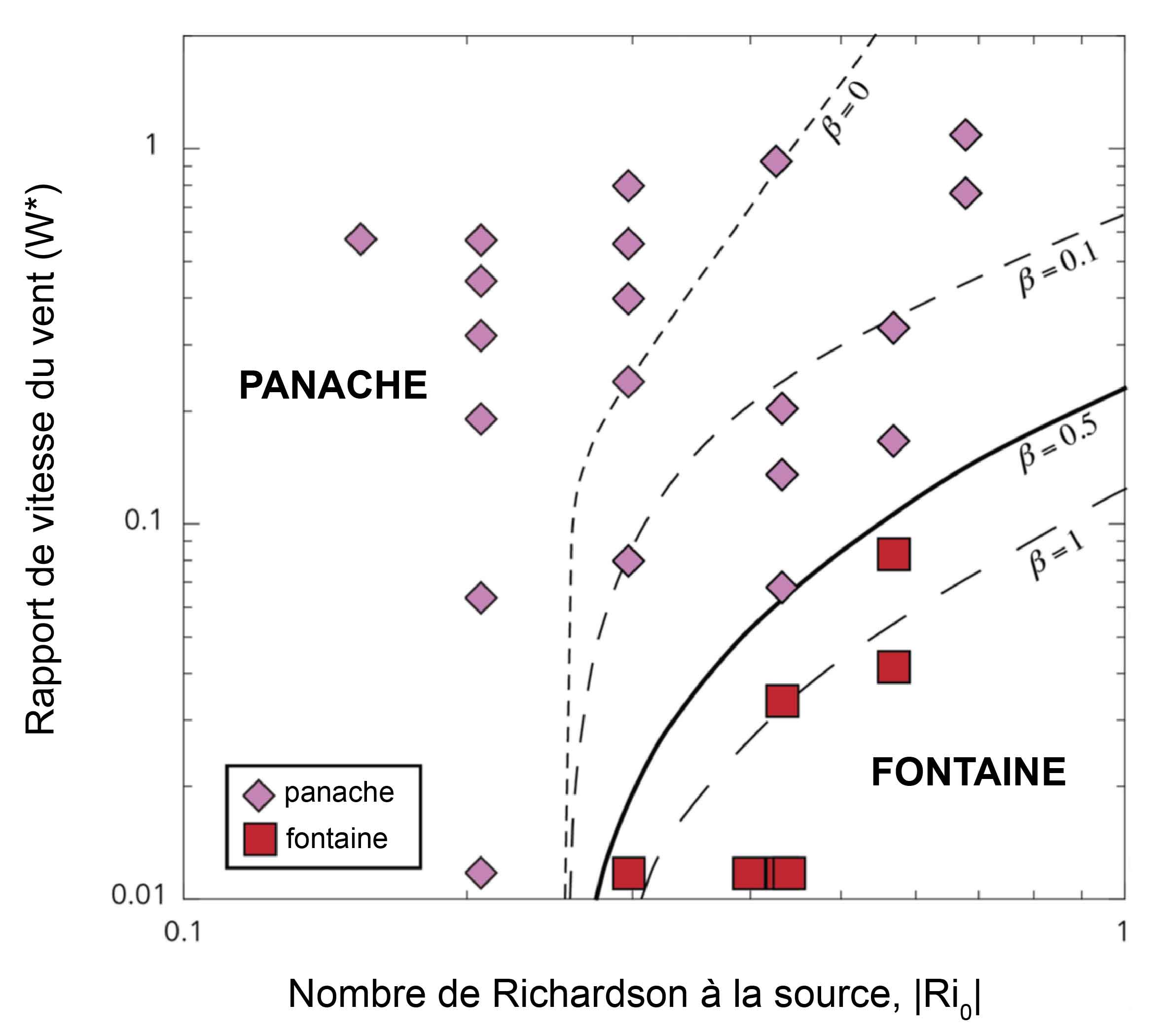Guillaume Carazzo > Research > Turbulent jets and plumes (FR | EN)

Main Content

Plumes in windy conditions
A rising turbulent plume can be strongly disturbed by the presence of atmospheric or oceanic currents. In the atmosphere, strong winds can deflect the plume trajectory and significantly reduce its maximum height.
We develop analog models to reproduce this phenomenon at the laboratory scale in order to understand the mechanisms that control the flow dynamics.
Laboratory experiments allow us to obtain simple scaling laws that can be applied to geophysical flows.
Few results:
Influence of wind on a turbulent positively buoyant jets (Carazzo et al., 2014)
Turbulent entrainment due to wind (Aubry et al., 2017a, Aubry et al., 2017b)
Funding:
BQR - IPGP (FR)

Jets with reversing buoyancy
Turbulent entrainment of ambient fluid is a crucial phenomenon for buoyant jets with reversing buoyancy that may either rise or collapse.
Our laboratory experiments allow us to better constrain this process and to understand how strong winds affect the stability of these jets.
The theoretical results are then incorporated into our physical models of volcanic plume.
Few results:
Turbulent entrainment in jets with arbitrary buoyancy (Kaminski et al., 2005 ; Carazzo et al, 2006)
The collapse of a turbulent fountain (Carazzo et al., 2010)
Stability of a jet with reversing buoyancy (Michaud-Dubuy et al., 2020)
Funding:
RAVEX - French National Research Agency (FR)
©2025 - G. Carazzo